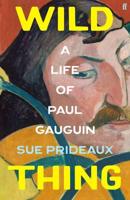Publisher's Synopsis
By the early 19th century the Gothic Revival was well on the way to becoming the most important style in Britain and was influencing public taste all over the world. With its particular concerns for pattern, ornament, and anti-classical principles of design and structure, the style remained popular until the 1920s and continues to be well known today. Less familiar, however, is the man who invented the Gothic Revival, Augustus Welby Northmore Pugin, the most influential designer in 19th-century Britain. This book is the first to offer a complete appraisal of Pugin's life and achievements.;As a designer of cathedrals, parish churches, schools, colleges, and private homes, and in particular as one of the two designers of the new Palace of Westminster, Pugin launched Gothic as the State style in Britain and in many other parts of the world. Pugin was also an industrial designer, creating furniture, metalwork, silver and jewellery, textiles, wallpapers, and book design in an integrated and coordinated approach to design that revolutionized public taste. He also influenced opinion by writing books that ranged from design manuals to polemical arguments in defence of his principles. Passionate about his beliefs and his Catholic faith, Pugin produced a body of work in architecture, the applied arts, and literature that is especially remarkable for a man who died at the age of forty.;This beautiful book contains twenty-one essays by international scholars and specialists, who discuss in detail the various aspects of Pugin's life and career. Lavishly illustrated, the book will be the catalogue for the first major Pugin exhibition ever mounted, held at the Victoria and Albert Museum, London, from 15 June to 11 September 1994.










